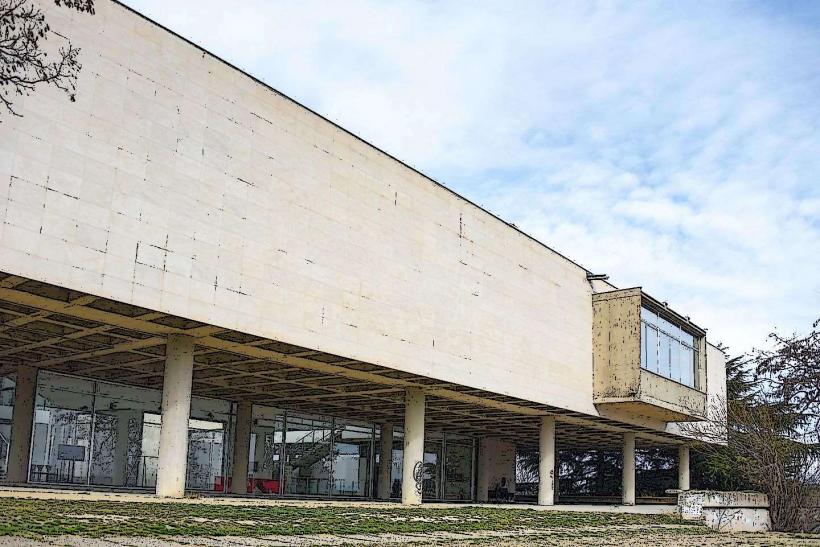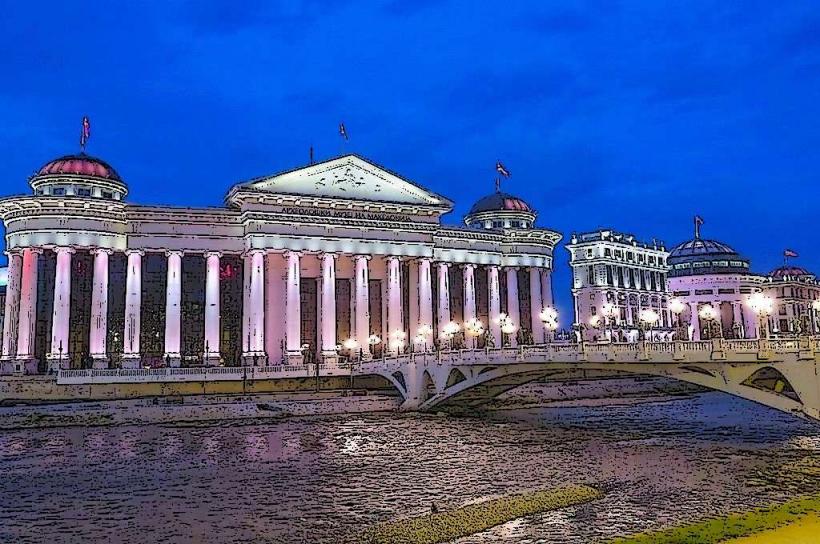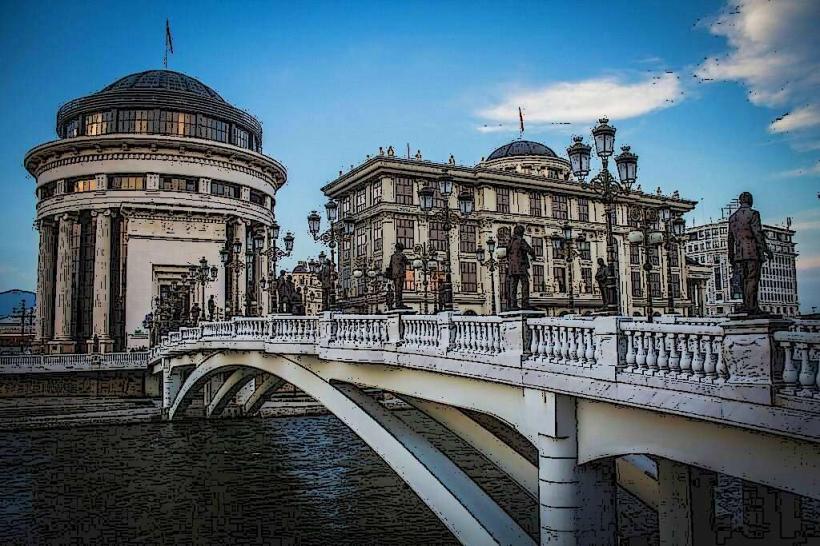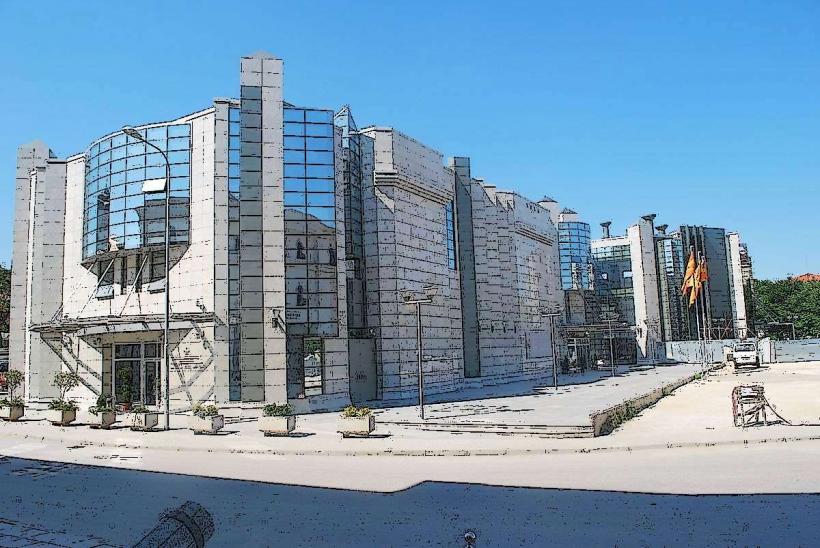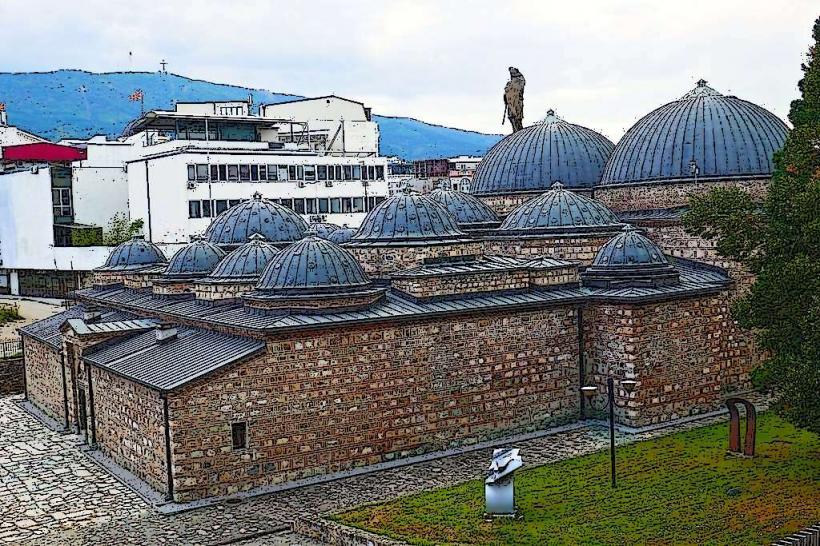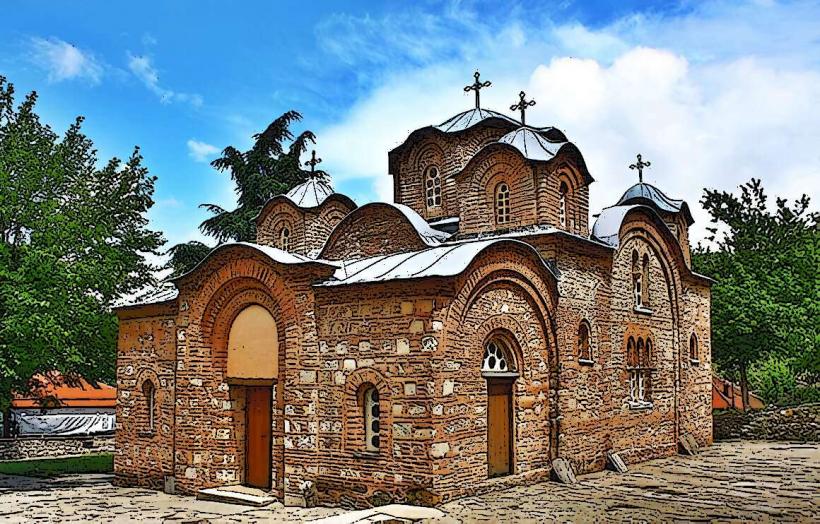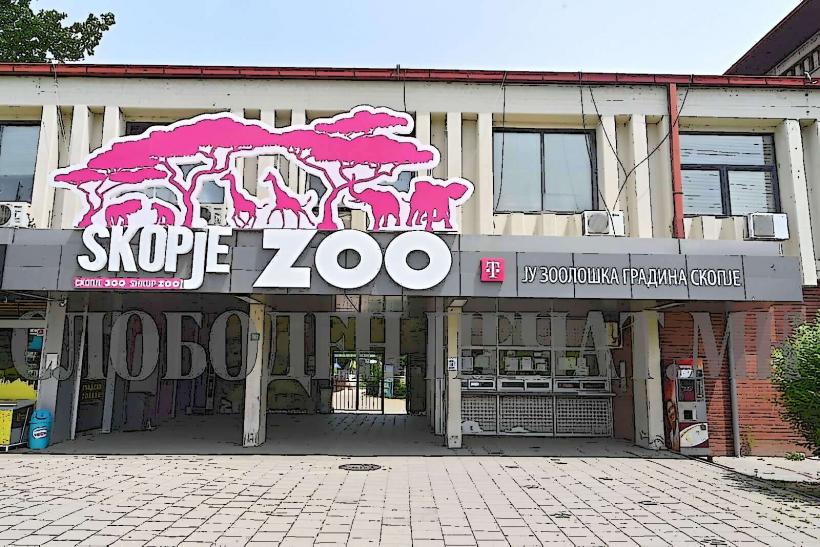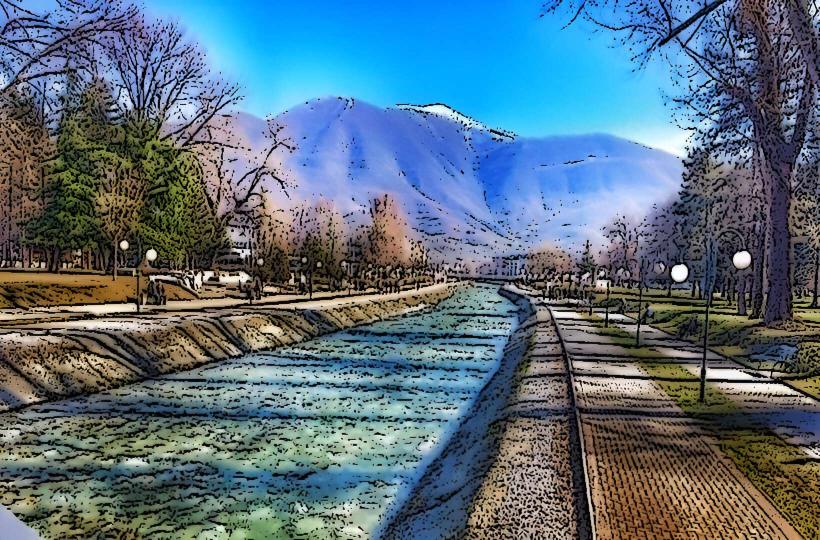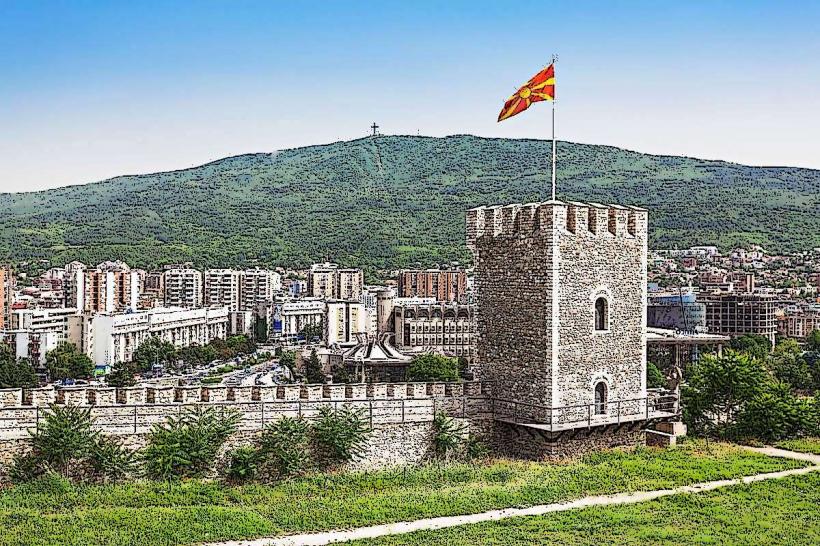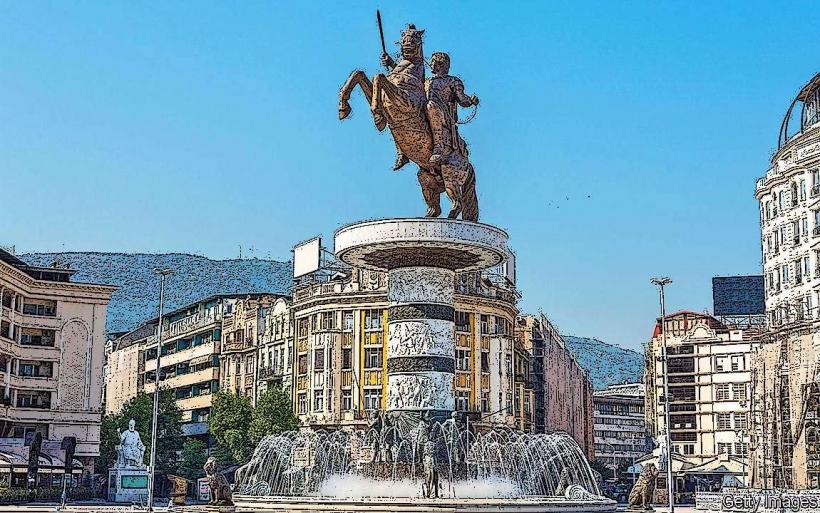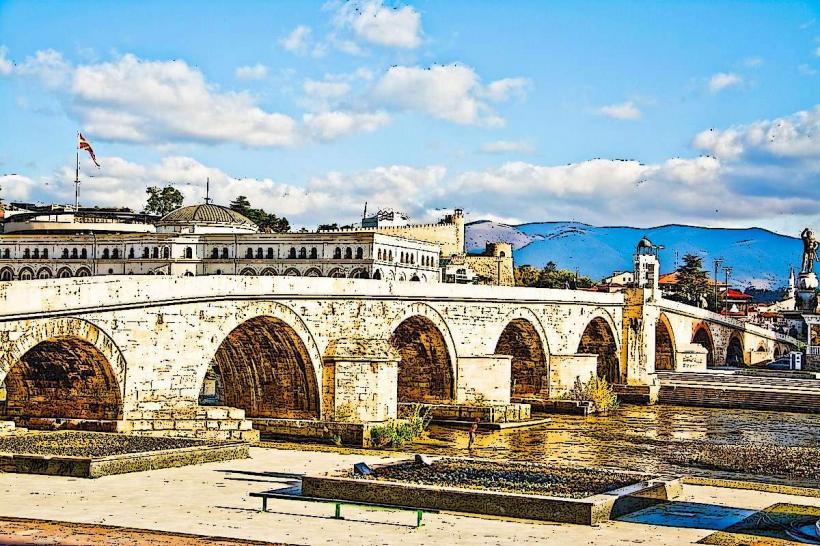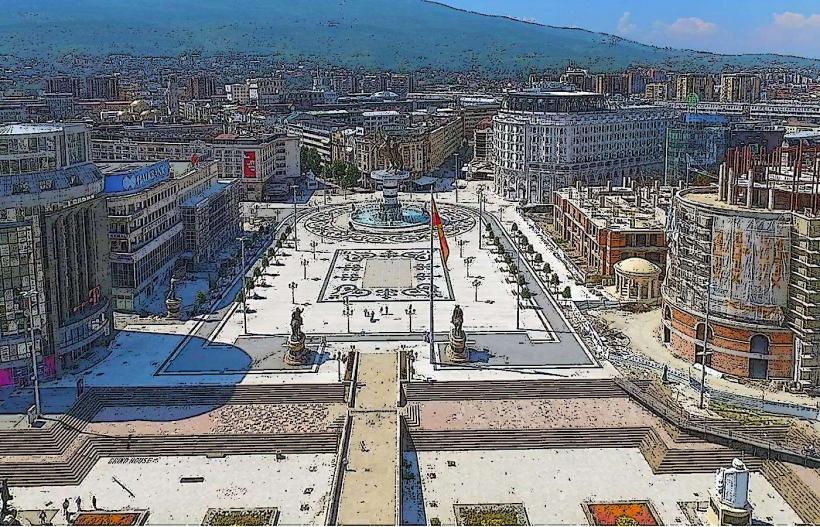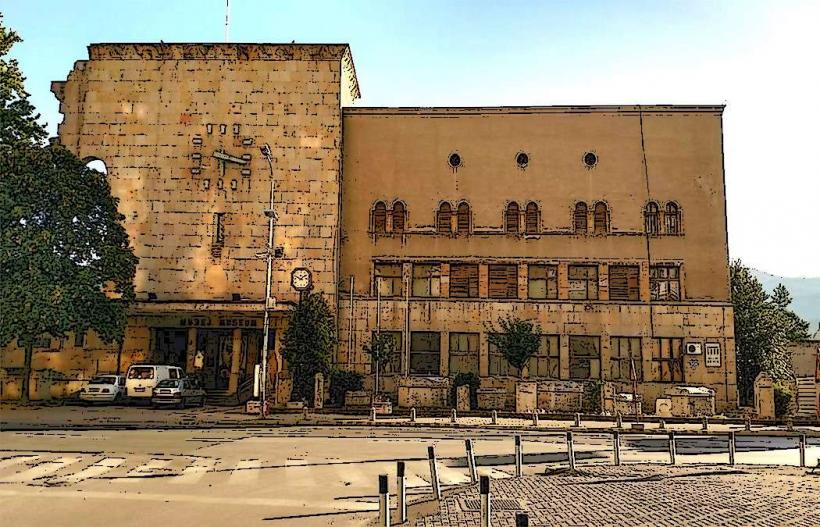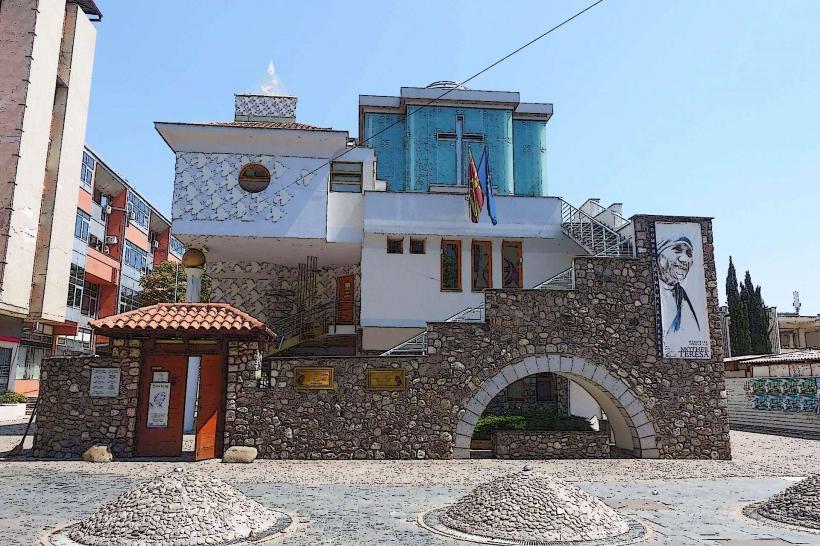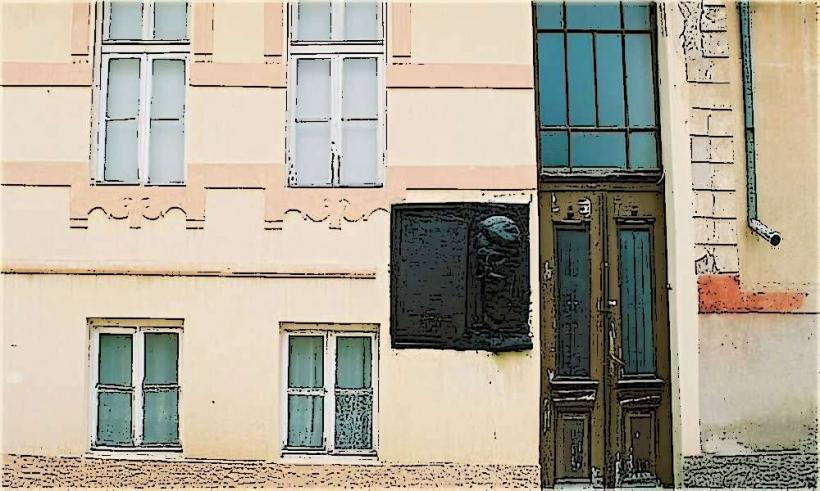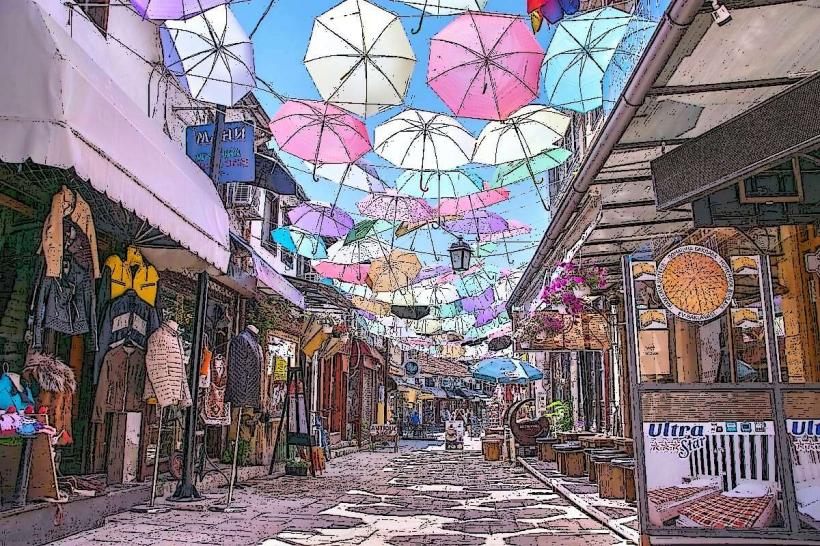Information
Landmark: Skopje AqueductCity: Skopje
Country: North Macedonia
Continent: Europe
The Skopje Aqueduct (Скопски аквадукт, Skopski akvadukt) is a historical structure located near Skopje, North Macedonia. It is one of the few remaining examples of Roman, Byzantine, or Ottoman water systems in the Balkans, and its origins remain a subject of scholarly debate. The aqueduct is a significant cultural and architectural landmark, showcasing the region's ancient engineering capabilities.
Overview
- Location: Approximately 2.5 km northwest of central Skopje, near the village of Vizbegovo.
- Construction Date: Uncertain, with theories suggesting it was built during the Roman, Byzantine, or Ottoman periods.
- Length: Originally much longer, around 55 arches remain today, stretching over a distance of approximately 386 meters.
- Material: Constructed with brick and stone, typical of ancient water engineering.
Historical Theories
Roman Origin:
- Some historians believe the aqueduct was constructed during the Roman Empire to supply water to the city of Scupi, a major Roman settlement near modern Skopje.
Byzantine Period:
- Another theory attributes its construction to the Byzantine Empire, possibly during the reign of Emperor Justinian I (6th century CE).
- This theory is supported by Skopje’s proximity to Justiniana Prima, a city founded by Emperor Justinian.
Ottoman Era:
- Others argue that the aqueduct was built during the Ottoman Empire, primarily to supply water to Skopje's Ottoman baths and mosques.
- This theory is based on records of extensive water infrastructure projects during Ottoman rule in the Balkans.
Architecture and Design
Structure:
- The aqueduct consists of arches supported by piers that span a gently sloping terrain.
- The construction reflects advanced knowledge of hydraulics and materials.
State of Preservation:
- While some sections have deteriorated, the remaining arches are well-preserved and serve as an impressive example of ancient infrastructure.
Cultural and Historical Significance
- Engineering Marvel: The Skopje Aqueduct is a testament to the advanced engineering skills of its builders, regardless of its exact historical origin.
- Symbol of Continuity: It reflects the historical layers of Skopje, connecting Roman, Byzantine, and Ottoman influences.
- Heritage Site: The aqueduct is protected as a cultural monument, though it remains under-researched and under-promoted compared to other landmarks.
Visiting the Aqueduct
How to Get There:
- The site is accessible by car or taxi, located a short drive from Skopje’s city center.
- Public transport options may also be available, but walking or cycling from the city is a popular choice for locals and tourists.
What to Expect:
- Visitors can explore the surviving arches and take in the scenic views of the surrounding countryside.
- The site is not heavily developed for tourism, so there are no official guides or facilities.
Best Time to Visit:
- Early morning or late afternoon is ideal for photography, as the lighting enhances the architectural details.
Nearby Attractions
- Skopje Fortress (Kale): A historical site offering panoramic views and insights into Skopje's past.
- Old Bazaar: A lively cultural and commercial area with Ottoman-era architecture.
- Museum of Macedonia: Provides a deeper understanding of the region’s history and heritage.
Challenges and Conservation
- The aqueduct faces threats from urban expansion, neglect, and natural erosion.
- Conservation efforts are limited, and there is a need for greater investment in its protection and promotion as a tourist site.
Conclusion
The Skopje Aqueduct is a remarkable historical structure that embodies the rich and layered history of Skopje. While its exact origins remain a mystery, it stands as a symbol of the city's enduring significance across civilizations. For history enthusiasts and travelers, the aqueduct offers a fascinating glimpse into ancient engineering and a tranquil escape from Skopje's bustling city center.


